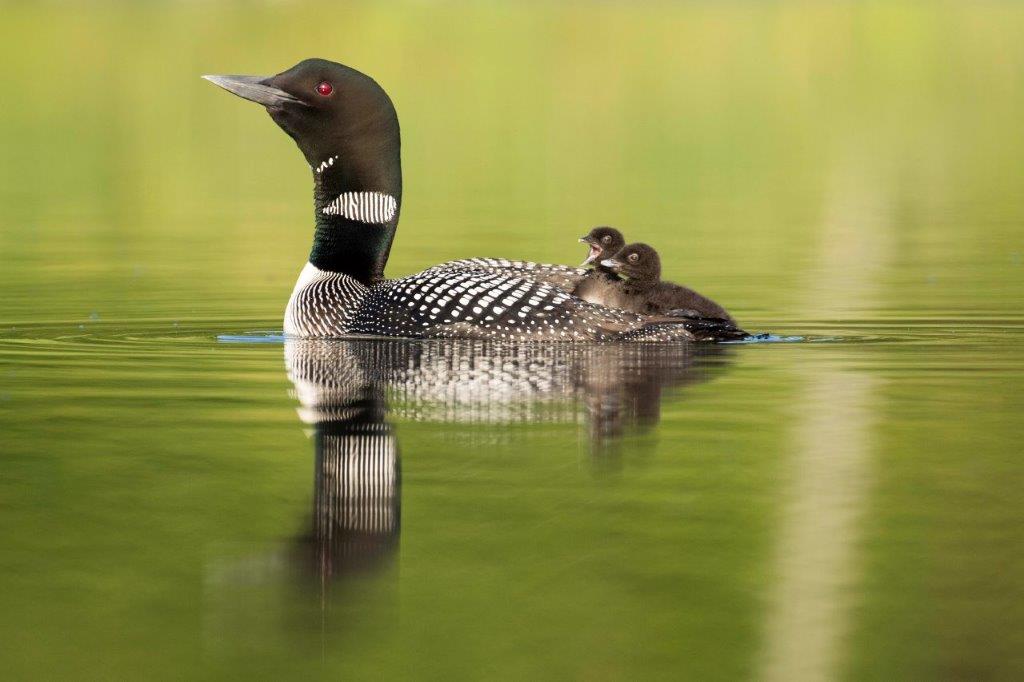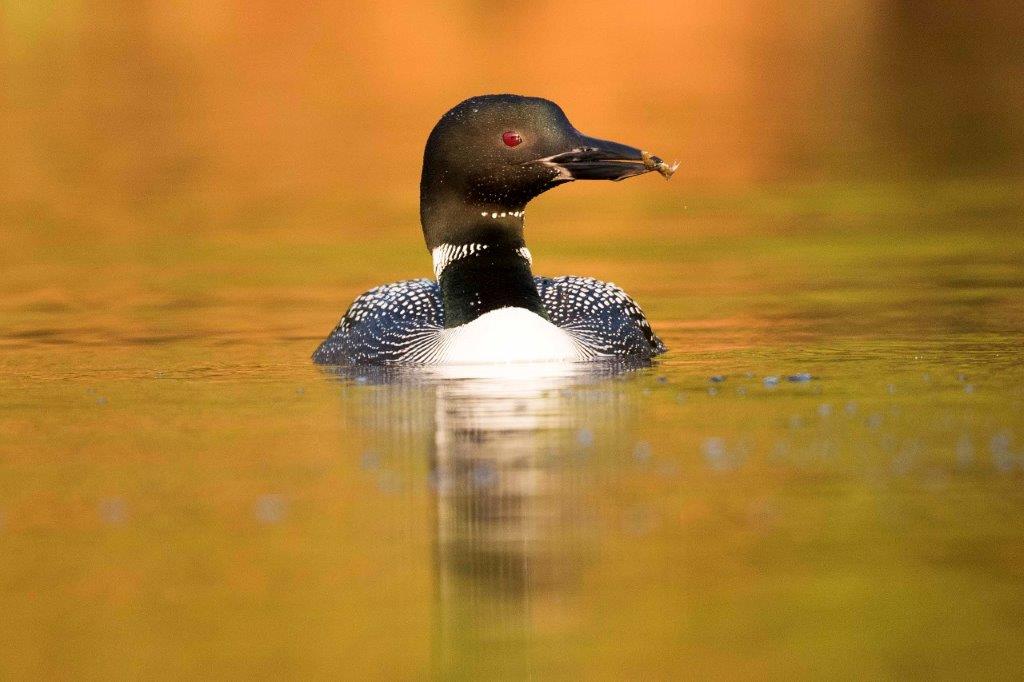By Dr. Doug Tozer, Director, Waterbirds and Wetlands, Birds Canada
Birds Canada volunteers collect important information for bird conservation. Using data from 35 wildlife research and monitoring programs, we’re able to track the pulse of populations of most Canadian bird species – including the iconic Common Loon. As such, we’re often able to pinpoint issues requiring action before they go too far, so bird populations can thrive despite the human-caused threats they face.
We recently used 40 years of volunteer data from our Canadian Lakes Loon Survey to document and help explain mysterious declines over the years in the number of Common Loon babies raised to independence (i.e., loon “productivity”). Our analysis shows that Common Loon productivity has significantly decreased across most of southern Canada over the past several decades.
This result is monumentally important because these declines have been formally documented in only one other study, focused on a single county in northern Wisconsin. In other words, without the dedication of our many thousands of Loon Survey volunteers, the world would have no idea that the Common Loon is in trouble across such a wide area!

Loon Survey volunteer Photo: David Gignac
Notably, the rate of decline in productivity in the Wisconsin study, which was based on intensive monitoring of uniquely colour-marked individuals with leg bands by an army of trained professional technicians, is nearly identical to the rate of decline found by our volunteers across adjacent Ontario. This is a feather in the hats of our volunteers, showing the reliability of their carefully-collected and hard-earned data.
Of course, the “million-dollar” question is why is loon productivity declining? Once again, the data collected by our volunteers comes into play.
The Canadian Lakes Loon Survey now has information for a remarkable 35,000 breeding attempts by Common Loon pairs across the country, collected by over 4000 volunteers. Data collection started in 1981 in Ontario and across the rest of southern Canada in the mid-1990s. This huge amount of information allowed us to test the influence of over a dozen different factors on loon productivity, so we could support or refute whether they could be driving the mysterious declines. The factors we tested included damage from acid rain, fish mercury contamination, shoreline development, boating activity, predation risk from Bald Eagles, competition for forage fish from Double-crested Cormorants, and a suite of weather variables based on temperature and precipitation.
To make a long story short: we ruled out shoreline development, human disturbance, eagles, and cormorants as strong factors explaining the declines in loon productivity across broad scales, such as across all of Ontario or southern Canada. However, some of the factors certainly do play a role on particular lakes. Our analysis suggests that a complex interplay between damage from acid rain, mercury pollution, and ongoing climate heating may be at least partly to blame for the loon productivity declines across the country. We dub this the “acid-mercury-climate hypothesis” and we are pursuing research to further test if it has merit. Doing so will provide much needed guidance on what to do next to best conserve this impressive symbol of pristine wilderness.

Young Common Loon Photo: Mark Peck
We encourage you to read the Canadian Lakes Loon Survey 40-year report for a clear and engaging overview of everything described above, plus we recommend that you watch the short video introducing the report. You might also enjoy a recent radio interview and magazine article on the topic.
We have published the details of our analyses based on Canadian Lakes Loon Survey data in four peer-reviewed scientific technical papers in Avian Conservation and Ecology, Science of the Total Environment, Biological Conservation, and Northeastern Naturalist (plus the supporting study from Wisconsin can be found here). If you wish to read these papers in full, but require assistance accessing them, please contact Dr. Doug Tozer.
Let’s face it: without the haunting cry of a loon from a distant lake, the northern woods would just feel wrong, and not nearly as enjoyable and relaxing. The efforts of our Canadian Lakes Loon Survey volunteers will be invaluable as we continue to unravel what’s behind these mysterious declines, so we’ll know what to do to ensure Common Loons thrive into the future.
Common Loon with chicks Photo: Mark Peck
We at Birds Canada thank the many thousands of volunteers who collected much of the data used in our analyses. We also extend our gratitude to the organizations that provided financial support for our research and monitoring, including in particular: Long Point Waterfowl and Wetlands Research Program of Birds Canada, Acadia University, The Bluff’s Hunting Club, John and Pat McCutcheon Charitable Foundation, Mitacs, SC Johnson, and TD Friends of the Environment Foundation.
To learn more about the Canadian Lakes Loon Survey, find tips on how you can help Common Loons, or to register to participate in the program, please visit www.birdscanada.org/loons.




